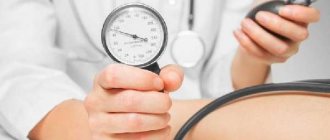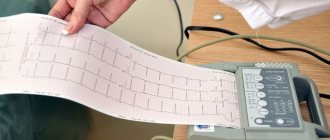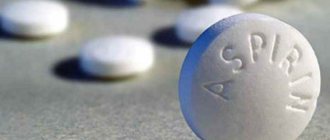In this article you will find out whether running is harmful or beneficial for the heart and why you need to train it.
The beneficial effects of physical activity on the cardiovascular system have been proven by numerous studies and examples. But it is important to know that an irrationally selected load or incorrect structure of the training process can lead to a negative effect on both the body as a whole and the heart in particular.
That is why both professional and amateur athletes must be under constant medical supervision and train according to an individual training plan.
How the heart works
To understand how running affects the heart, you need to know how the cardiovascular system works in its normal state - at rest.
The main organ of the cardiovascular system is the heart. During contraction of the heart muscle, blood is released into the systemic and pulmonary circulation. Through the systemic circulation, blood is distributed to all systems and organs, including the upper and lower extremities. And the pulmonary circulation enriches our lungs with oxygen.
With each contraction of the heart, approximately 140-160 ml of blood is released into the circulatory system of a healthy person, this value is called the stroke volume of the heart (SV). To calculate how much blood is ejected per minute, it is necessary to multiply the stroke volume by the heart rate (HR), this value is called the cardiac output (MCV) and averages 3-5 l/min.
University
→ Home → University → University in the media → A cold is not as terrible as its consequences
The incidence of acute respiratory tract infections is increasing worldwide. This is due to increasing environmental pollution, irrational use of antibiotics, household allergies, smoking, deterioration of the immune system, and unfavorable social factors. Against this background, pulmonologists note with regret the increase in the number of chronic diseases, mainly pneumonia and bronchitis. Most often they occur after repeated respiratory infections, especially when patients, feeling better, voluntarily stop treatment. ARVI is perhaps the most common diagnosis of the autumn-winter season. Maybe that's why he is perceived as absolutely 'not scary'. A person suffers from a so-called cold on his legs over and over again, but once again he is surprised: where did he get bronchitis or pneumonia from? It seemed like he was doing everything as always: aspirin, something for a cough... About 200 varieties of viruses are known that cause ARVI - acute respiratory (respiratory tract) viral infections. What they all have in common is that they are transmitted by airborne droplets, have the same symptoms, and are not treated with antibiotics. The most famous of them is the influenza virus. The symptoms of ARVI are familiar to everyone: fever, runny nose, dry cough, headache, general weakness. Actually, the treatment of ARVI consists of the treatment of these manifestations. Temperature requires special attention. It is an indicator that the body is fighting infection. It is the increase in temperature during ARVI that helps kill the causative agent of the disease. In this condition, a person should remain in bed (under no circumstances try to “overcome” a cold on the legs), drink more - drinking plenty of fluids helps remove toxins from the body that are formed during illness. People handle heat differently. More often, in order to minimize the discomfort associated with fever, they try to fight it - this is not at all difficult, because there are dozens of antipyretic drugs in pharmacies. Their use 'blurs' the clinical picture of the disease. The biological significance of fever is the activation of the body's immune (defense) reactions. Increased body temperature prevents the proliferation of viruses. But if you have a fever for more than three days and your temperature is 38°C or higher, then this is a serious sign that bacterial complications have joined ARVI (acute sinusitis, otitis media, bronchitis, pneumonia). And they require other treatment, including antibiotics. If the temperature is artificially reduced with medications, diagnosis and treatment may be delayed. All of the above applies to adults; in children, approaches to diagnosis and treatment are somewhat more complicated. You need to see a therapist. He will prescribe treatment, if necessary, additional examination, and refer you to a specialist. Every year, after the winter flu epidemic, new and new legions are added to the army of constantly coughing people. The production of a small amount of sputum and a slight cough are usually of little concern. Many people quickly get used to them and consider them to mean nothing. But coughing and sputum production are signs that allow one to suspect trouble, and more often these are symptoms of bronchitis (possibly already chronic) or pneumonia. These diseases also involve the cardiovascular system in the process - the so-called cor pulmonale is formed. About 7% of the adult population suffers from chronic lung diseases. Chronic cor pulmonale develops in approximately 3% of these patients, and in the overall structure of mortality from congestive heart failure, chronic cor pulmonale accounts for 30% of cases. The disease called cor pulmonale is very insidious; it may not manifest itself with special symptoms until a certain time. That is why timely diagnosis is a decisive factor in curing the patient. Pulmonary heart is a condition of overload and hypertrophy of the walls of the right ventricle of the heart as a result of increased pressure in the pulmonary circulation. Chronic cor pulmonale can develop over many years. I give the floor to a colleague who is competent in this problem. Pulmonary heart Diseases of the bronchi and lungs have a significant impact on the state of the cardiovascular system. Damage to the heart and a complex of circulatory disorders caused by a disorder of the bronchopulmonary system are called cor pulmonale. This condition develops as a result of about seventy diseases: most often (80% of cases) - diseases of the bronchi and lungs (chronic obstructive pulmonary disease, pneumoconiosis, sarcoidosis, tuberculosis, etc.); rarely - diseases affecting the chest and diaphragm (curvature of the spine, multiple injuries to the ribs with limited mobility of the chest, Pickwick syndrome in obesity, pleurisy); sometimes - as a result of primary damage to the pulmonary vessels (primary pulmonary hypertension, recurrent thromboembolism of the branches of the pulmonary artery, etc.). The main mechanism for the development of cor pulmonale is considered to be an increase in pressure in the arterial vessels of the pulmonary circulation and pulmonary artery (pulmonary hypertension). Impaired blood oxygen saturation causes a narrowing of the blood vessels in the lungs, their restructuring and insufficient blood supply to the tissues (tissue hypoxia). In addition to changes in blood vessels and lung tissue, the volume of circulating blood increases, the number of blood cells increases, and its viscosity increases. Against the background of the development of respiratory failure, changes occur in the right ventricle of the heart: metabolic disorders occur in the heart muscle, then its hypertrophy (increase in mass). The right chambers of the heart, experiencing increased stress when pushing blood into the pulmonary artery, expand, their contractility decreases - heart failure develops. If signs of heart failure appear suddenly, within a few hours, the development of cor pulmonale is called acute; within a few weeks - subacute; for several months, years - chronic. Chronic cor pulmonale develops almost imperceptibly over many years, without obvious clinical signs of circulatory failure. Anyone who has diseases of the bronchi and lungs must undergo examinations to identify signs of chronic pulmonary heart disease. ECG and X-ray methods reveal signs of hyperfunction and/or hypertrophy of the right ventricle. An informative method for measuring pressure in the pulmonary artery and assessing the condition of the heart muscle is echocardiography. With decompensated cor pulmonale, a person may feel pain in the heart area, in the right hypochondrium, swelling appears in the legs and/or feet, and the nature of shortness of breath changes. A common sign of cor pulmonale is rhythm disturbances: palpitations (tachycardia), irregular contractions. Undoubtedly, treatment of chronic pulmonary heart disease must begin as early as possible - with measures to prevent exacerbations of bronchopulmonary infection. It is very important to quit smoking (active and passive!). It is necessary to avoid hypothermia and prevent acute respiratory diseases. In case of heart failure, it is necessary to limit physical activity and follow a diet with limited salt and liquid. In the treatment of pulmonary heart disease, medications are used that improve blood circulation, normalize metabolic disorders, restore the structure of the heart and blood vessels, and lower blood pressure (systemic and in the pulmonary artery). If indicated, diuretics are added, using them with caution to prevent a significant decrease in the volume of circulating blood and its thickening. Other drugs are prescribed according to indications (cardiac glycosides, prostaglandins, vasodilators, etc.). Hypoxemia and hypoxia (low oxygen content in the blood and, as a result, in the tissues of the body), as a rule, lead to an imbalance of magnesium and potassium in the body. The use of diuretics and cardiac glycosides aggravates the deficiency of these vital ions and causes a deterioration in metabolic processes in the myocardium, as well as cardiac arrhythmias. The administration of drugs containing potassium and magnesium (panangin) helps improve myocardial metabolism and normalize heart rhythm. In the treatment of respiratory failure in cor pulmonale, the use of oxygen therapy is of great importance. Evgenia Trisvetova, Doctor of Medical Sciences, Professor of the 2nd Department of Internal Diseases of the Belarusian State Medical University Rule for everyone: self-medication for the flu is unacceptable, all medications must be prescribed by a doctor This attitude may raise doubts, especially in conditions of a full-blown epidemic, when clinic doctors have terrible time pressure. But it is difficult to predict the course of the flu, and complications can be varied, including life-threatening and developing at lightning speed. This danger distinguishes influenza from other acute respiratory diseases. We will try to outline the reasonable actions of a person sick with influenza or ARVI before the first visit to the local doctor. When the first symptoms occur, it is recommended: 1. Drink plenty of fluids - tea with lemon, cranberry or lingonberry juice, alkaline mineral waters (Borjomi with milk, etc.); However, it should be remembered that excessive fluid intake is contraindicated in patients with chronic heart failure. 2. For high hyperthermia (above 38°) - antipyretics: paracetamol, ibuprofen in an age-appropriate dosage; aspirin - only for adults. 3. To facilitate nasal breathing - vasoconstrictors. It is necessary to remember about the development of atrophy of the nasal mucosa with their long-term use and the contraindication of these drugs for hypertension. Vasoconstrictors reduce swelling of the mucous membrane and improve the outflow of mucus from the paranasal sinuses, which prevents the development of sinusitis. Take seriously the advice on how to blow your nose correctly: clear each nostril in turn, while pressing the other with your thumb to the nasal septum. This must be done every time before putting drops into your nose. You can’t “sniff”: the viruses and inflammatory products contained in the nasal secretions enter the body, increasing intoxication. 4. Means for thinning and removing sputum (mucaltin, licorice root, marshmallow tincture, bromhexine, etc.). 5. If the cough is very strong, dry, painful, and prevents you from sleeping, use antitussives (mainly in pediatric practice). 6. Children over 2 years of age and adults in the first days of illness benefit from steam inhalations with infusions of chamomile, calendula, mint, sage, St. John's wort, pine buds, and a 1-2% soda solution (wait with this at high temperatures). 7. Taking ascorbic acid and multivitamins. All this is used to alleviate the typical symptoms of influenza and ARVI and does not affect the reproduction of the pathogen. The development of any complications of influenza requires emergency hospitalization and intensive treatment. Antibacterial drugs are prescribed only by a doctor in the presence of complications, as well as in the presence of chronic foci of infection (chronic sinusitis, pyelonephritis, etc.). According to one study conducted in Russia, three-quarters of surveyed primary care physicians were willing to use antibiotics in adults for influenza, starting from the first days of the disease. They considered the purpose of the prescription to be to prevent the occurrence of bacterial complications. But responsibility for the erroneous prescription of antibiotics that do not affect viruses should not be placed solely on the doctor. Most of the respondents pointed to pressure from the patient or his relatives, who believe that taking antibiotics is mandatory for fever. Question and answer I’m already used to coughing in the morning - I’ve been smoking for a long time. Recently, when walking fast, shortness of breath and stabbing pain in the heart appear. If you quit smoking, will it help you feel good again? (I.P. MOROZOV) - Undoubtedly, smoking aggravates your condition and you need to get rid of your addiction. Shortness of breath and pain in the heart area can occur with many heart diseases. However, a long history of pulmonary disease (smoking and coughing) indicates the possible development of cor pulmonale. You need to see a doctor. I have had a curvature of the spine since childhood. From the doctor I heard that my heart is “pulmonary”. However, I don’t smoke, I haven’t suffered from serious lung diseases... (Nina EGOROVA) - 'Cor pulmonale' is a collective concept that is used to characterize changes (structural and functional) that occur in the vascular bed of the pulmonary circulation and in the heart. These disorders can develop due to curvature of the spinal column. Are there early signs of heart damage in lung diseases? (TRIFONOVA Galina Sergeevna) - Unfortunately, subjective signs indicating dysfunction of the cardiovascular system appear at a later date. At the same time, it is known that prevention of exacerbations of bronchopulmonary infections, timely treatment of lung diseases and the use of medications that improve blood circulation in the pulmonary circulation, as well as normalize metabolic processes in the heart muscle, lengthen the period of normal heart activity. In my childhood I suffered from pulmonary tuberculosis. I undergo annual examinations; there have been no signs of process activity for many years. However, shortness of breath, enlarged liver, and swelling in the legs appeared. Doctors believe that the cause is heart damage due to a long-standing tuberculosis process in the lungs. Is this really possible after so many years of prosperity? (Igor KOROTCHENYA) - In the case of a widespread sclerotic process in the pulmonary tissue as a result of an infectious or non-infectious lung disease, circulatory disorders occur in the pulmonary circle and a pulmonary heart can form. The process of formation of chronic pulmonary heart lasts for years. I suffered from pneumonia several times as a child. Now (I am a 2nd year student) I have been diagnosed with bronchial asthma. I passed the winter session well, but was ill for two weeks: I was coughing, short of breath, and had pain in my heart. In addition to asthma medications, the doctor advised me to take potassium and magnesium supplements to improve metabolic processes in the heart. Is taking heart medications justified? (Maria Selkhanovich) - With bronchial asthma, attacks of bronchial obstruction occur, which lead to changes in the gas composition of the blood and metabolic disorders in the tissues of many organs. The use of drugs including magnesium and potassium has a normalizing effect on metabolic processes in the myocardium. In addition, since a tendency to bronchospasm can occur if the magnesium content in the body’s cells is reduced, potassium and magnesium supplements have a positive effect by reducing the reactivity of the bronchi.
doctor Alexander Nefagin Vecherniy Minsk , February 1, 2008
Share
Why you need to train your heart
During exercise, especially running, the impact on the heart increases. This leads to certain adaptive reactions on the part of the cardiovascular system:
- The heart increases in size due to an increase in the volume of the heart cavities. Thus, the minute volume of blood circulation becomes larger, and the blood supply to skeletal muscles and internal organs improves.
- Like any other muscle, with regular training the heart hypertrophies and, as a result, the capillary network grows. Thus, the heart is better supplied with blood.
- Thanks to regular jogging, the heart begins to work in a more economical mode, and the initial heart rate decreases. As a result, it is much easier for a person to control his emotions, and stress no longer leads to a sharp increase in heart rate.
We can talk a lot more about the positive effect of running on the cardiovascular system, but it must be remembered that the processes of cardiac hypertrophy are physiological in nature only as long as the growth of the capillary network keeps pace with the increase in myocardial mass.
marathon and half marathon training plans and start training today! -30% with promo code PLAN2020 all December!
With excessive physical exertion, body temperature rises, sweat compensates for this load, but fluid loss occurs and the blood thickens. This can cause blood clots to form. With the loss of fluid, potassium and sodium are excreted, a deficiency of which can lead to various heart rhythm disturbances.
It is important to remember the drinking regime here. And if a person already has chronic diseases that are contraindications for playing sports, exercise can aggravate the condition and lead to complications.
Read on: How much water should runners drink?
Causes of the problem
Pain in the heart area is also called cardialgia. As a rule, the cause of cardialgia is the presence of some pathology in the body.
Such pathologies include:
- Angina pectoris. This disease is characterized by damage to the coronary vessels, which causes problems with blood supply to the heart.
Respiratory diseases. Pathologies of the lungs often cause pain in the heart due to insufficient oxygen saturation of the blood.- Metabolic disorders in the myocardium. Dysfunction of the biological and chemical processes in this muscle leads to tissue weakening and possible necrosis if left untreated.
- Congenital or acquired myocardial defects.
- Atherosclerosis. This pathology occurs due to the accumulation of cholesterol in the vessels. Cholesterol deposits prevent free blood circulation, so internal organs (including the heart) do not receive nutrients and oxygen in the required volume.
In addition to the listed diseases, cardialgia can be caused by arrhythmia, aneurysms and other diseases.
Important! The patient may not even be aware of pathologies of the cardiovascular and respiratory systems, since they manifest themselves precisely during cardio load, especially when its intensity increases.
A specialist who should be contacted before starting training will help identify possible diseases.
Pain can also occur for the following reasons:
- Excessive load. If a novice athlete is not physically prepared enough, then too high an intensity can only damage the body and cause cardialgia.
- Spasms of intercostal muscles. These muscles play an important role in deep and rapid breathing. When glycogen is depleted and there is a lack of oxygen, convulsions can occur, and they already cause pain in the heart area. This pain is usually localized to a specific area and is worse on the left if the person leans to the right.
Muscles used when running
- Drinking alcoholic beverages.
- Poor nutrition or overeating.
- Smoking. The negative effect of tobacco smoke on blood vessels causes a narrowing of their walls, as a result of which the vessels lose strength.
A healthy lifestyle is not limited to just jogging. To maintain physical fitness, it is important to follow a whole range of measures, including proper nutrition and giving up bad habits.
Can you harm your heart by running?
Excessive physical activity negatively affects the cardiovascular system and can lead to a state of overtraining and the formation of a pathological sports heart. If the growth of the capillary network does not keep pace with the growth of the myocardium, this leads to a deterioration in the blood supply to the heart - myocardial ischemia.
The transition from a physiological “sports heart” to a pathological one and the development of heart failure usually occurs gradually and unnoticed by the athlete. That is why it is necessary not only to focus on your good health, but also to support all this with objective data - electrocardiography, echocardiography and stress testing.
Symptoms
Quite often, people who are actively involved in sports or, on the contrary, who have started physical activity relatively recently, note that their heart hurts after heavy lifting, running, or jumping. However, the heart muscle is not always the culprit of painful sensations. To identify heart problems yourself, it is recommended to pay attention to the following symptoms:
- Pain in the chest area, indicating problems with the myocardium, can be pulling or aching.
- The pain syndrome is paroxysmal in nature and can last for seven to fifteen minutes.
- The most common localization of pain is the area behind the sternum, that is, behind the central bone.
A particularly important point is the following: problems with the myocardium, associated with the appearance of painful sensations, are almost always accompanied by fluctuations in blood pressure.
What to consider when planning your workouts
First of all, before starting jogging, you must undergo a medical examination and establish the level of so-called “initial health.”
It is also very important to monitor your heart rate during exercise. By your heart rate you can judge the intensity of physical activity for your body. The most accurate pulse zones for constructing the training process can be determined using treadmill testing with gas analysis and blood sampling.
This test will show such important indicators for runners as maximum oxygen consumption (VO2) and anaerobic metabolic threshold (ANT). Based on these indicators, one can judge the athlete’s fitness, and with further repeated testing, evaluate the effectiveness of the training process.
If your knees hurt after running: identifying causes and effective treatment methods
Running is a very popular sport. It is practiced by millions of people around the world, regardless of their professions and interests. Morning or evening jogging is a healthy, fashionable way to keep your body in good shape. But sometimes after running the knee hurts and causes a lot of inconvenience to a person. In order for this sport to be a joy and bring favorable emotions, you should understand why a joint may ache after a race and how to treat it. There is a high risk of injury when playing this sport. One wrong step can cause a sprain, dislocation or fall. Existing diseases and pathologies may also become aggravated or worsened. After all, diarthrosis, which is already under constant load, experiences even greater pressure. It is impossible to treat this “bell” from the body with disdain and it is worth understanding why pain occurs and how to deal with it.
Why does your heart hurt when running and what to do about it?
Heart pain when running is mostly pathological. Most often, such sensations can occur due to myocardial circulatory insufficiency. If you experience discomfort in the chest, you should stop physical activity, restore breathing and immediately consult a doctor.
The screening method in such a situation will be electrocardiography and ECHO-CG (ultrasound of the heart). Of course, when such complaints appear, it is better to supplement the examination with stress testing, since at rest there may not be any changes in the electrocardiogram.
Causes
If your heart hurts after running on a treadmill, this may indicate a number of serious diseases, common among which are:
- Myocardial dystrophy. The pathology is a dystrophic lesion of the heart muscle, provoked by the presence of bad habits, heavy physical activity, and excess body weight.
- Coronary insufficiency is a violation of blood flow in the coronary arteries.
- Ischemic disease.
- Thrombophlebitis is the formation of thrombotic masses in the cavities of blood vessels and arteries.
- Hypertension.
Painful sensations in the chest that occur after playing sports often bother people who lead a sedentary lifestyle. Pain in this case is a signal that the myocardium cannot cope with intense loads, and the vascular system transports a significantly increased volume of blood.
How to prevent heart pain in athletes:
- be examined by a cardiologist;
- to refuse from bad habits;
- eat well, get enough sleep;
- maintain a drinking regime (35–50 ml of water/1 kg of body weight);
- warm up before training;
- After exercise, do a cool-down appropriate for the sport;
- start with minimal loads at low intensity;
- gradually gradually increase the complexity of the program.
If the examination reveals a disease that forces you to limit sports activity, we recommend classes with a physical therapy specialist who will select an individual set of exercises and determine the intensity and degree of physical activity.
When is pain after running normal?
After a variety of sports activities, so-called “normal” soreness may appear in the knees. It occurs as a reaction to changes in bone and joint tissues, muscles and tendons. There is no need to worry if:
1. The discomfort is not severe and lasts a short period of time. Usually the muscles of the thighs and ankles are also bothered. This is the same “soreness” that occurs due to the production of lactic acid in the tissues. Such pain goes away in a maximum of 3-4 days or less, depending on the degree of training of the runner: the more athletic he is, the weaker the soreness manifests itself and the faster it goes away.
2. Rapidly passing aching pain without a specific localization. It is felt when pressed, does not have a specific point.
However, this only applies to pain that is not intense and passes quickly, as well as pain in beginners in sports - muscles and diarthrosis, out of habit, always ache after training.
Circumstances of discomfort
The appearance of unpleasant sensations indicates a disruption of circulatory processes in muscle and parenchymal organs. These changes are determined by the following mechanisms of action:
- Increasing the volume of circulating blood in the vessels.
- An increase in the size of the spleen and liver with tension in their capsule.
- Increased blood flow in the coronary vessels.
- Increased oxygen consumption by the heart and skeletal muscles.
In healthy people, complaints are noted during jogging and are associated with an incorrect training regimen. After restoring the sequence of exercise stages with slowly increasing loads, pain no longer occurs. This occurs due to the gradual adaptation of the body to changes in conditions of increased oxygen demand. If the discomfort does not go away over time or appears in the chest area, you should pay attention to this.
Preventing knee pain when running
To avoid unpleasant pain after your favorite run, you should adhere to a number of rules:
- Run only on level ground
. You can also run on asphalt, but this is less preferable. But running on paving stones is not recommended at all; - Choose suitable shoes
that will tightly “envelop” and carefully fix your foot. Sneakers with a rigid back, shock-absorbing inserts and a flexible toe are suitable. The thickness of the sole should be the same over its entire surface. The shoes are not laced tightly, but the foot should not “walk” in the sneaker; - Run with proper technique
. You cannot direct all the tension of the step to the heel; you should place your foot straight or with support on its front part; a smooth roll is made from heel to toe. The supporting leg should be slightly bent at the knee so as not to overload the joint. Your arms should be bent at 90 degrees, with your fists raised above your chest. You should run silently and easily; - The duration and intensity of the workout
must be planned so that the difficulty increases gradually. You cannot immediately run continuously for half an hour if the person has not previously exercised at all. This approach will only do harm; - Before jogging, there must
be a warm-up for all muscle groups.
Active running loads can lead to knee injury, even if all the rules are followed. In this case, you need to see a doctor who can determine the cause of the pain and prescribe the appropriate course of treatment and supportive procedures.









